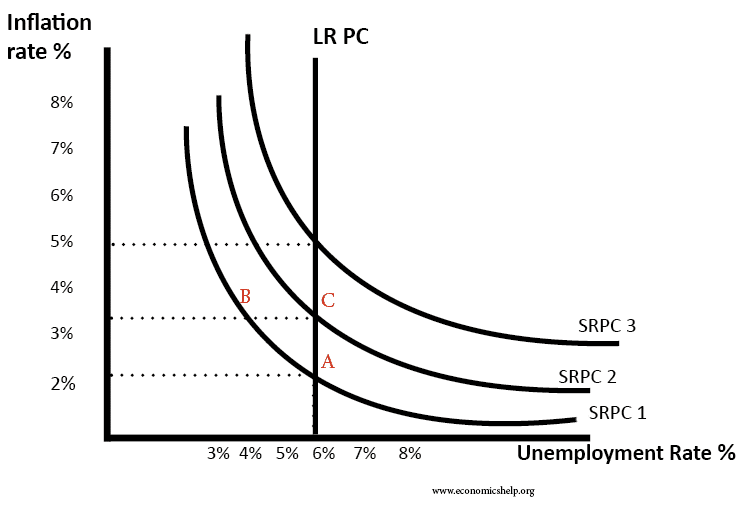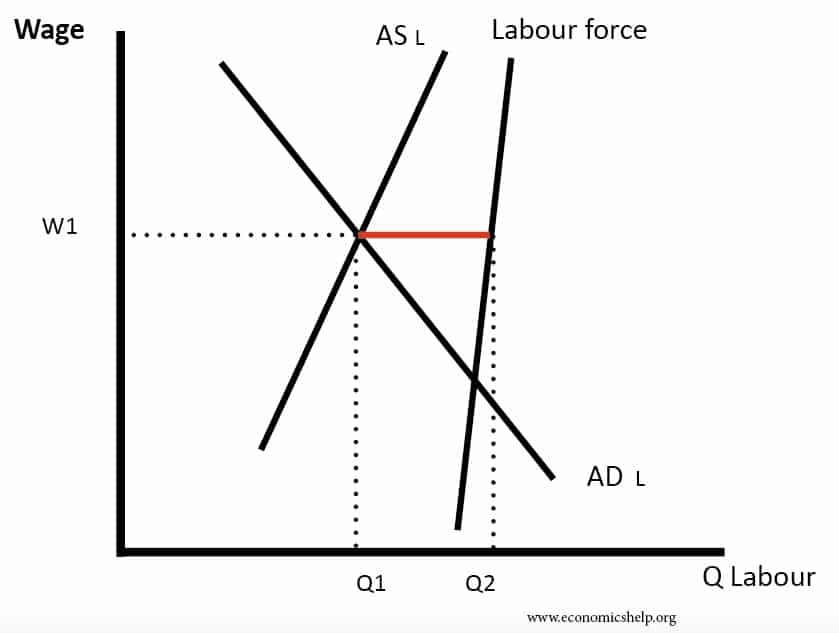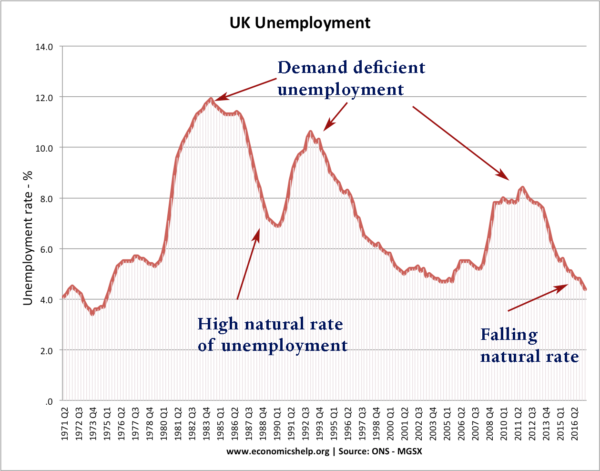The natural or (equilibrium) level of unemployment is determined by calculating the level of unemployment when the labour market is in equilibrium.
Diagram Showing Natural Rate of Unemployment
The labour force includes everyone of working age who is either working or looking for work.
The Aggregate Supply (AS) of labour is every one who is able and willing to supply their labour.
The difference is that not everyone in the labour force will actually be able to supply their labour, and this leads to the natural rate of unemployment.
What does the natural rate of unemployment include?
The natural rate includes frictional and structural unemployment.
- Frictional unemployment occurs when workers are in between jobs, for example, it will take time for graduates to find a suitable job.
- Structural unemployment occurs due to occupational and geographical immobilities. For example, some workers may not have the necessary skills to apply for a job, therefore they cannot supply their labour even though jobs are available.
The natural rate of unemployment is therefore caused by supply-side factors. Even when the macroeconomy is at full output or a “full employment level of output” there can still be unemployment, this unemployment is the natural rate.
Therefore the natural rate is not determined by a deficiency of AD.
Natural rate of unemployment and long-run Phillips Curve

Example from UK economy
This shows the rate of unemployment in the UK. The spikes in unemployment are due to the recession causing a fall in demand. The natural rate of unemployment can vary. In the 1980s, the natural rate was quite high. But since 2010, we have seen a fall in the natural rate. This is due to more flexible labour markets and a reduction in long-term unemployment.


